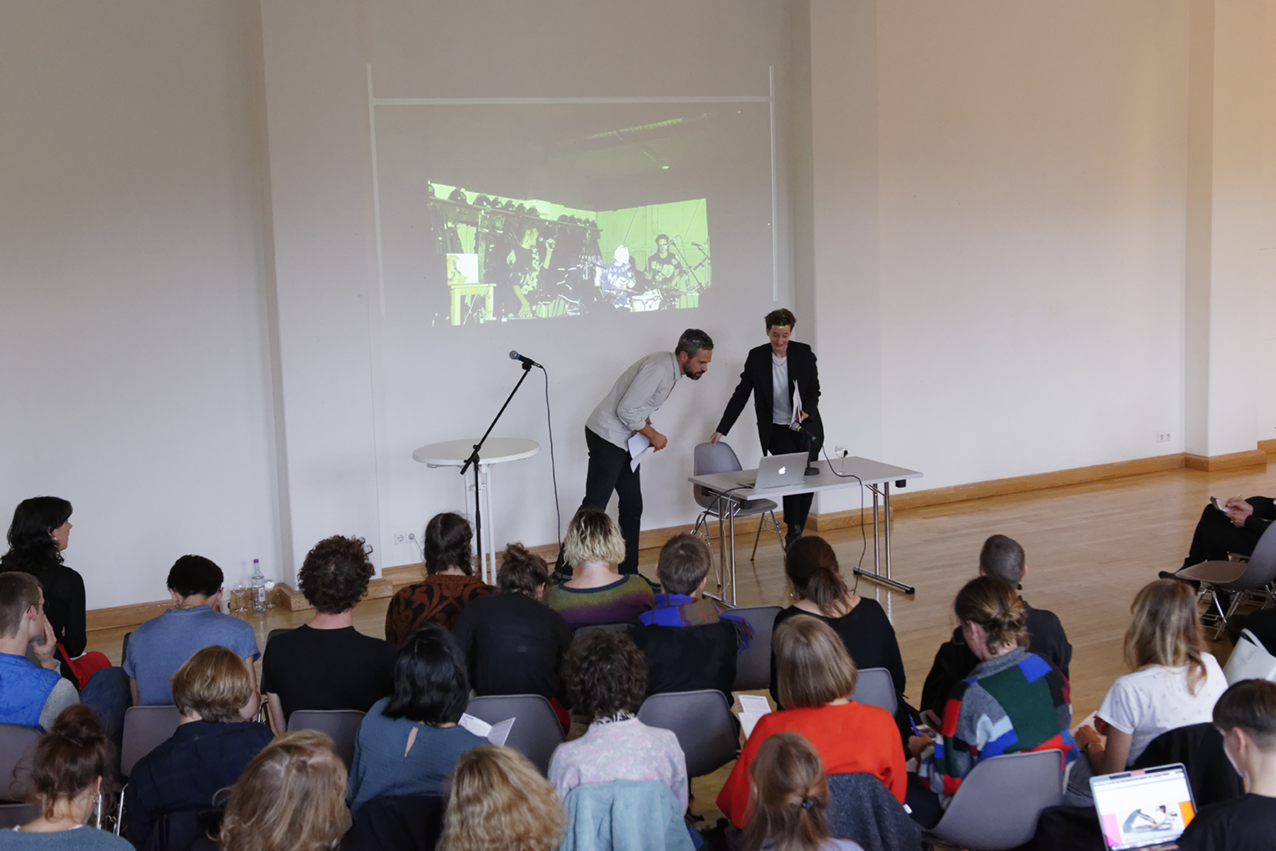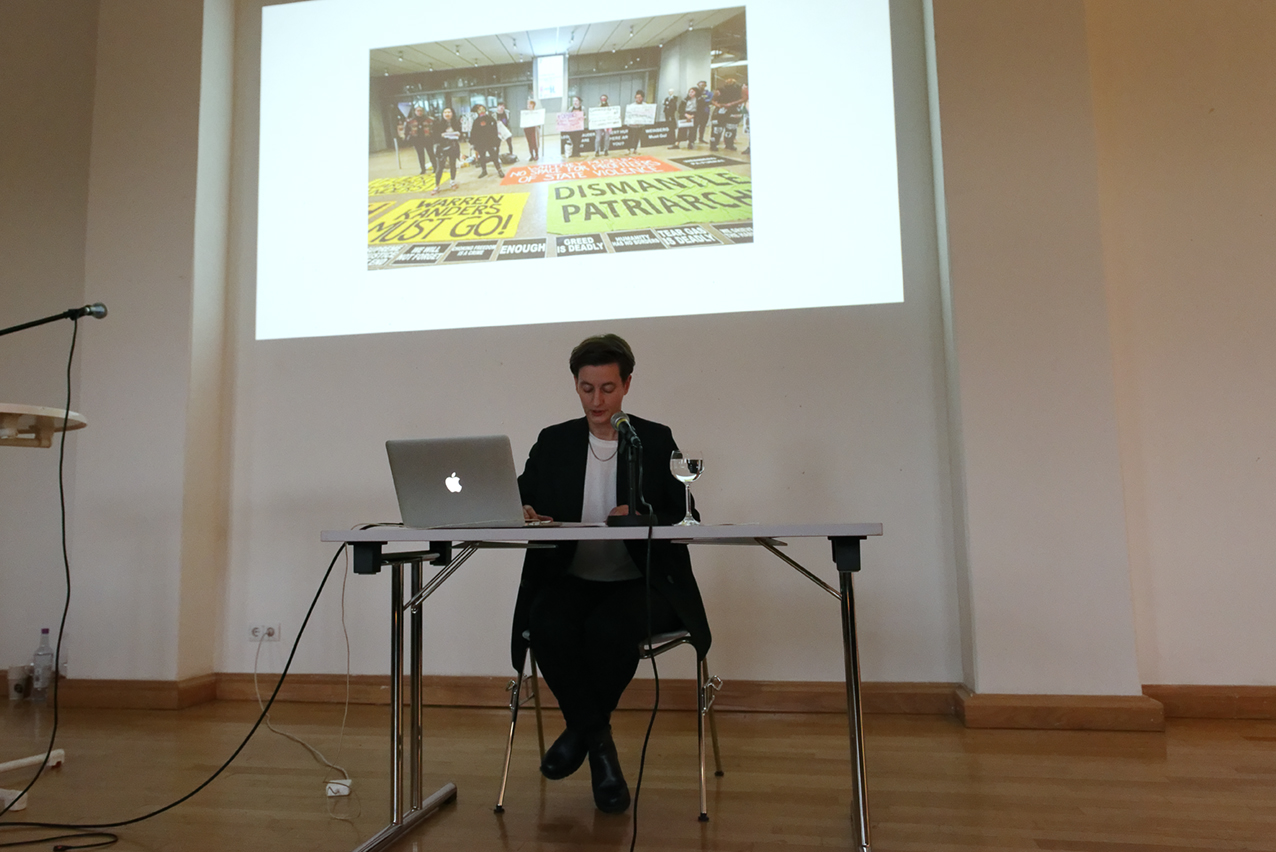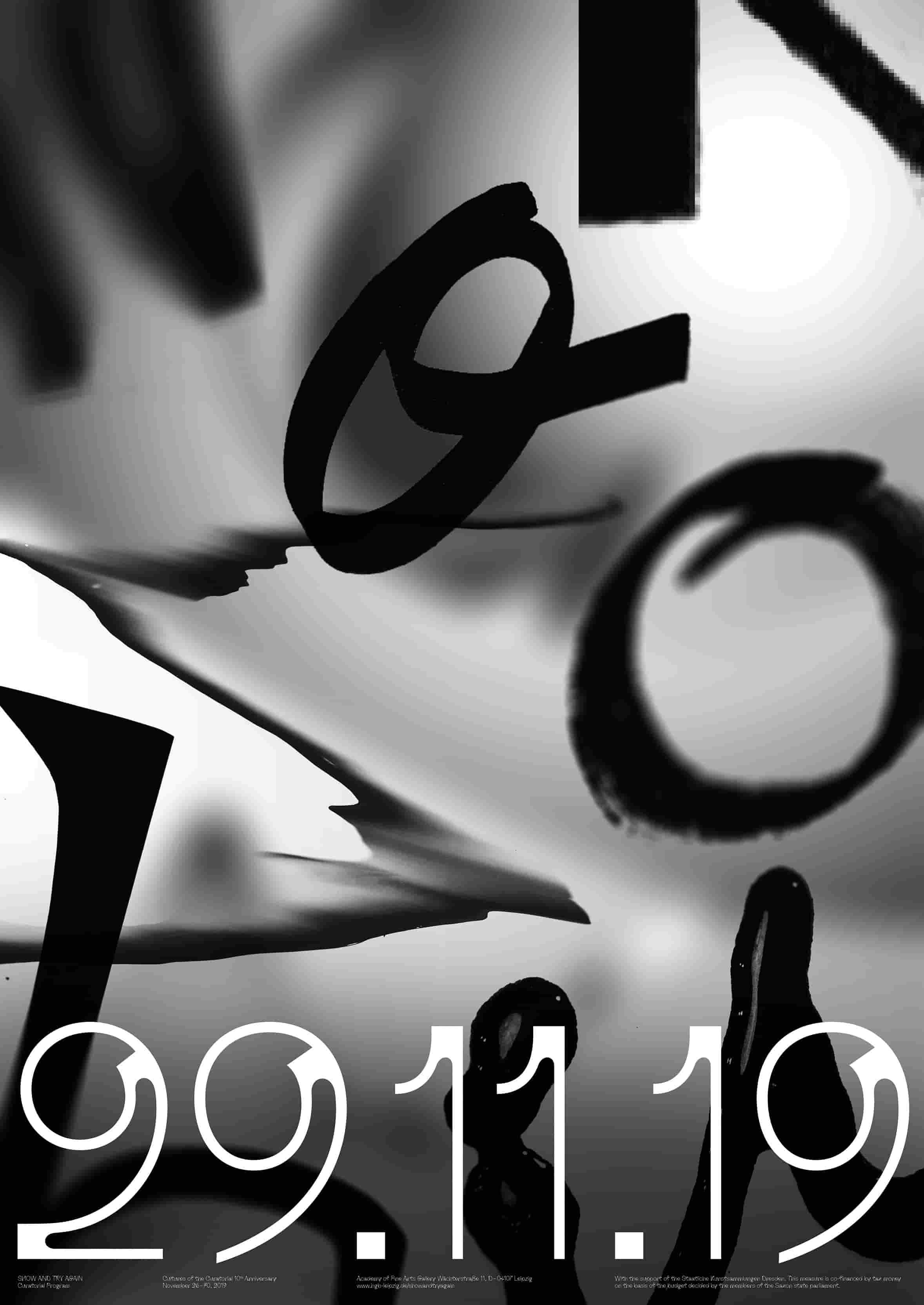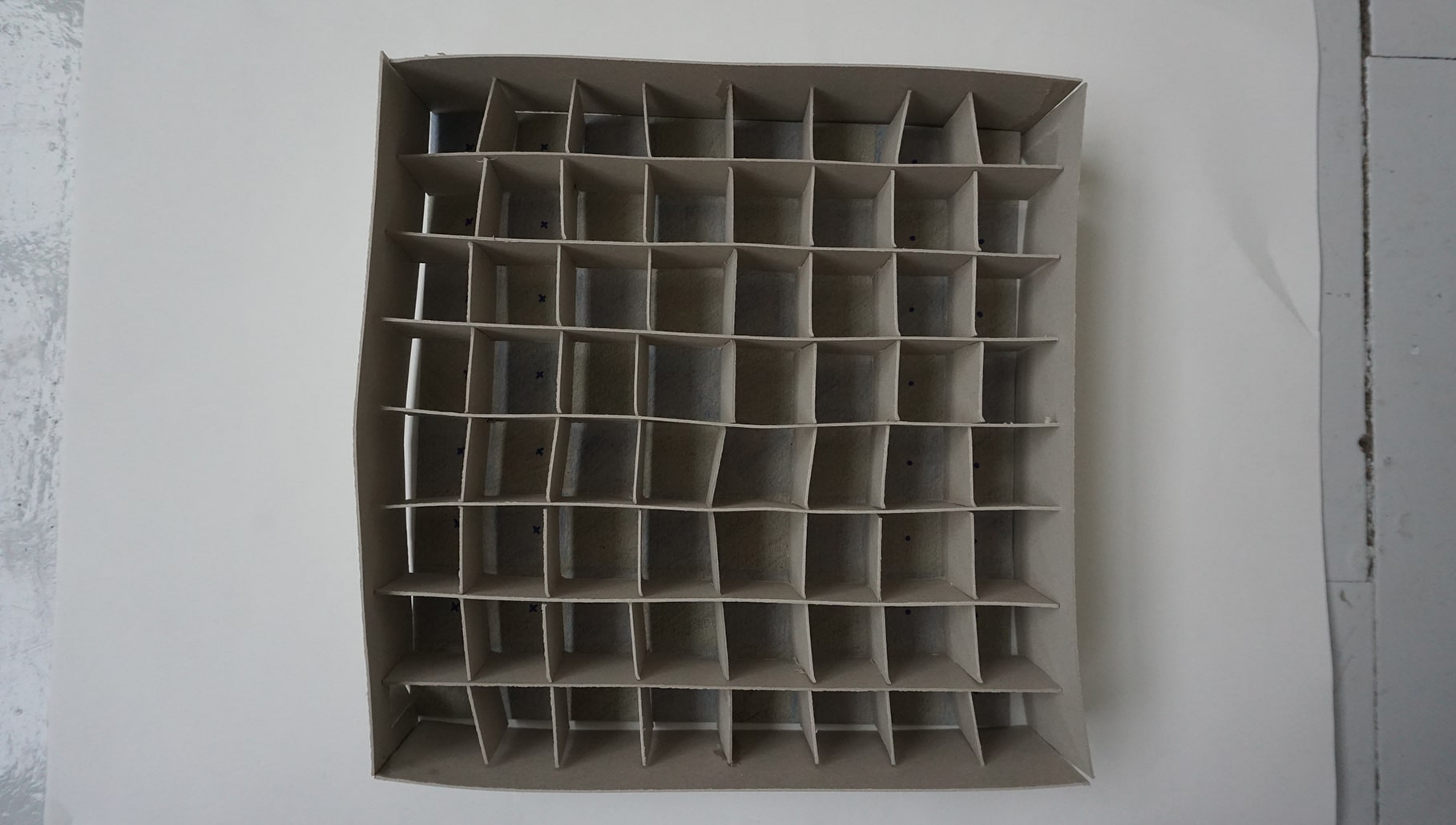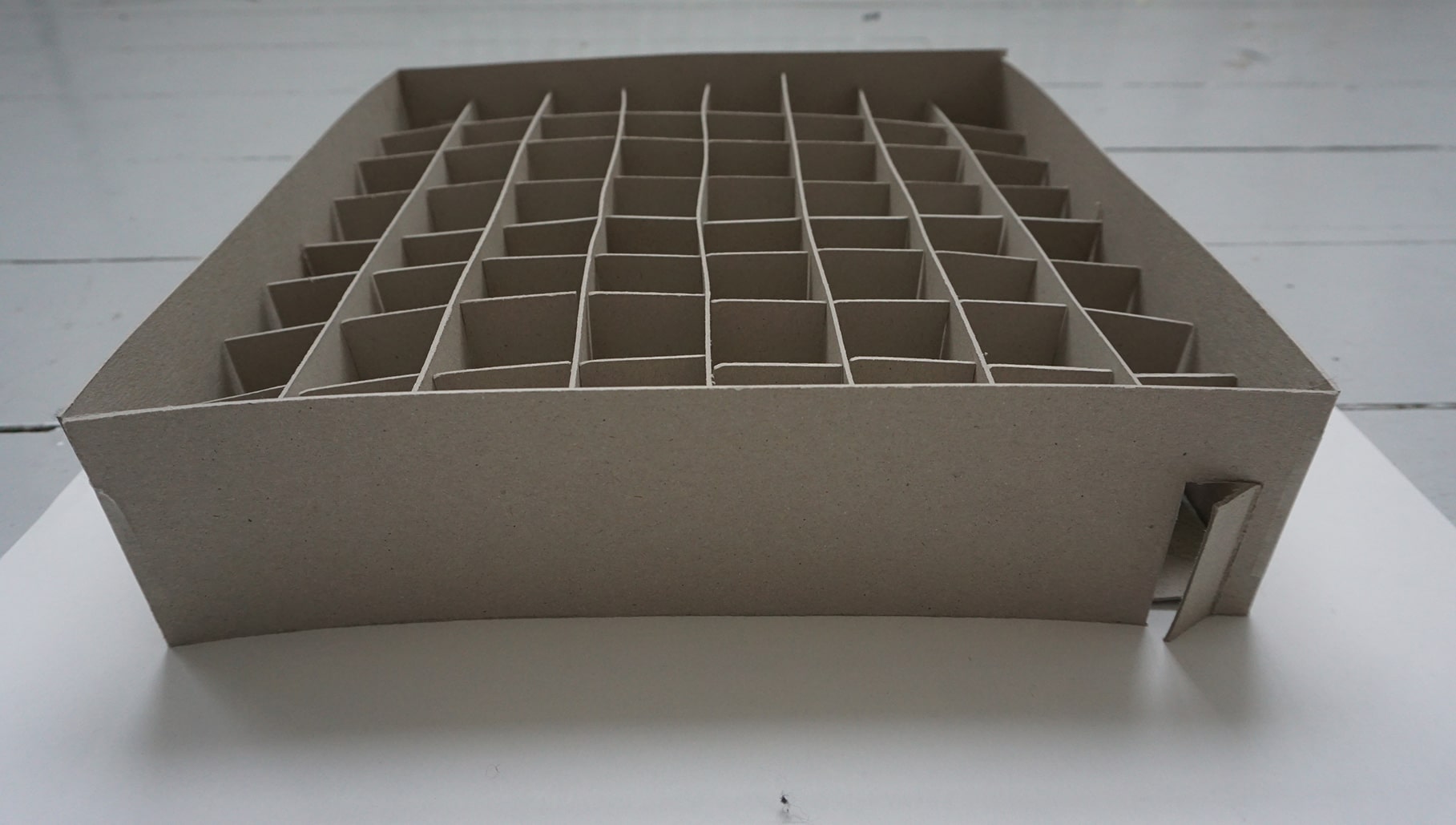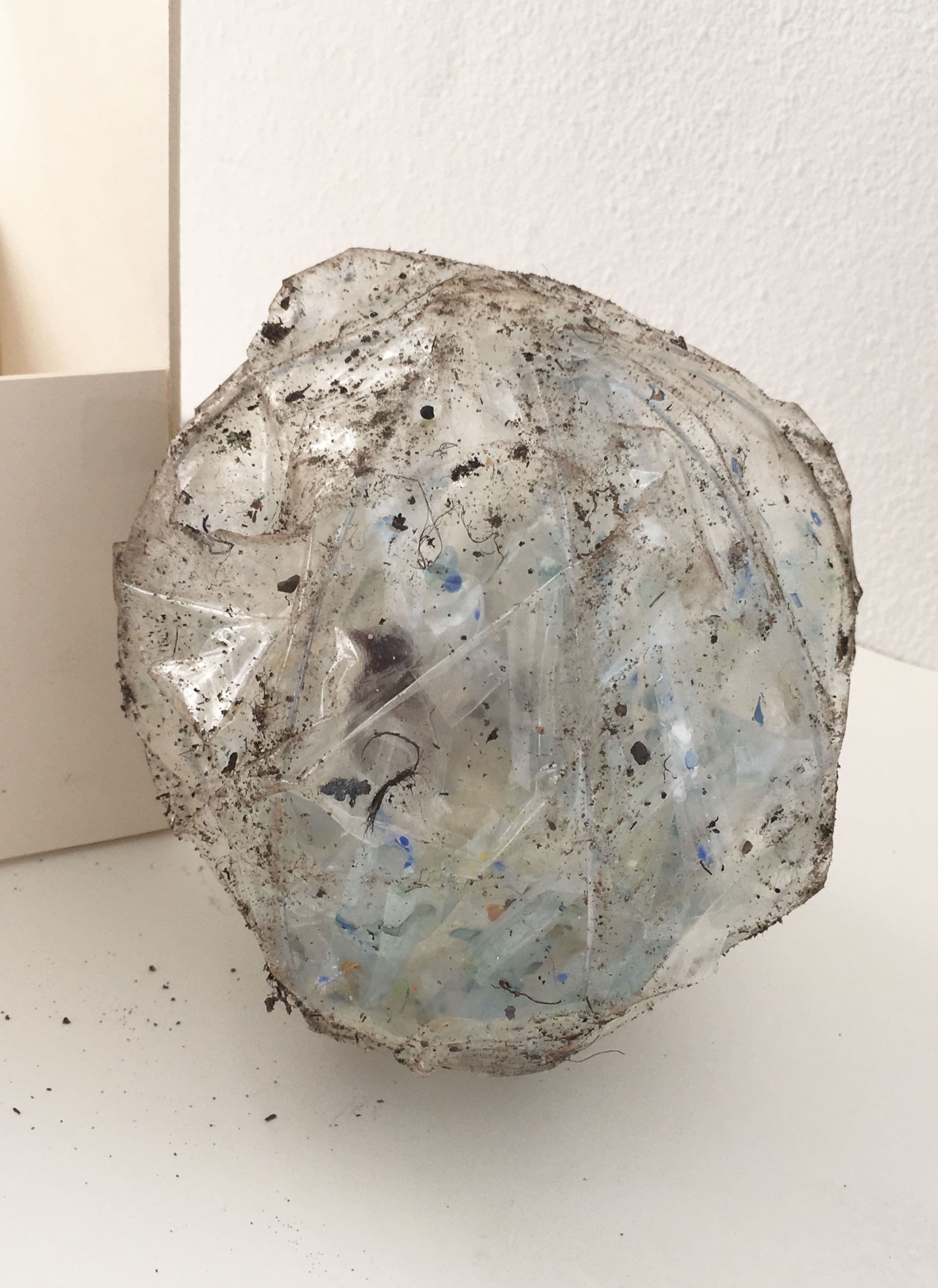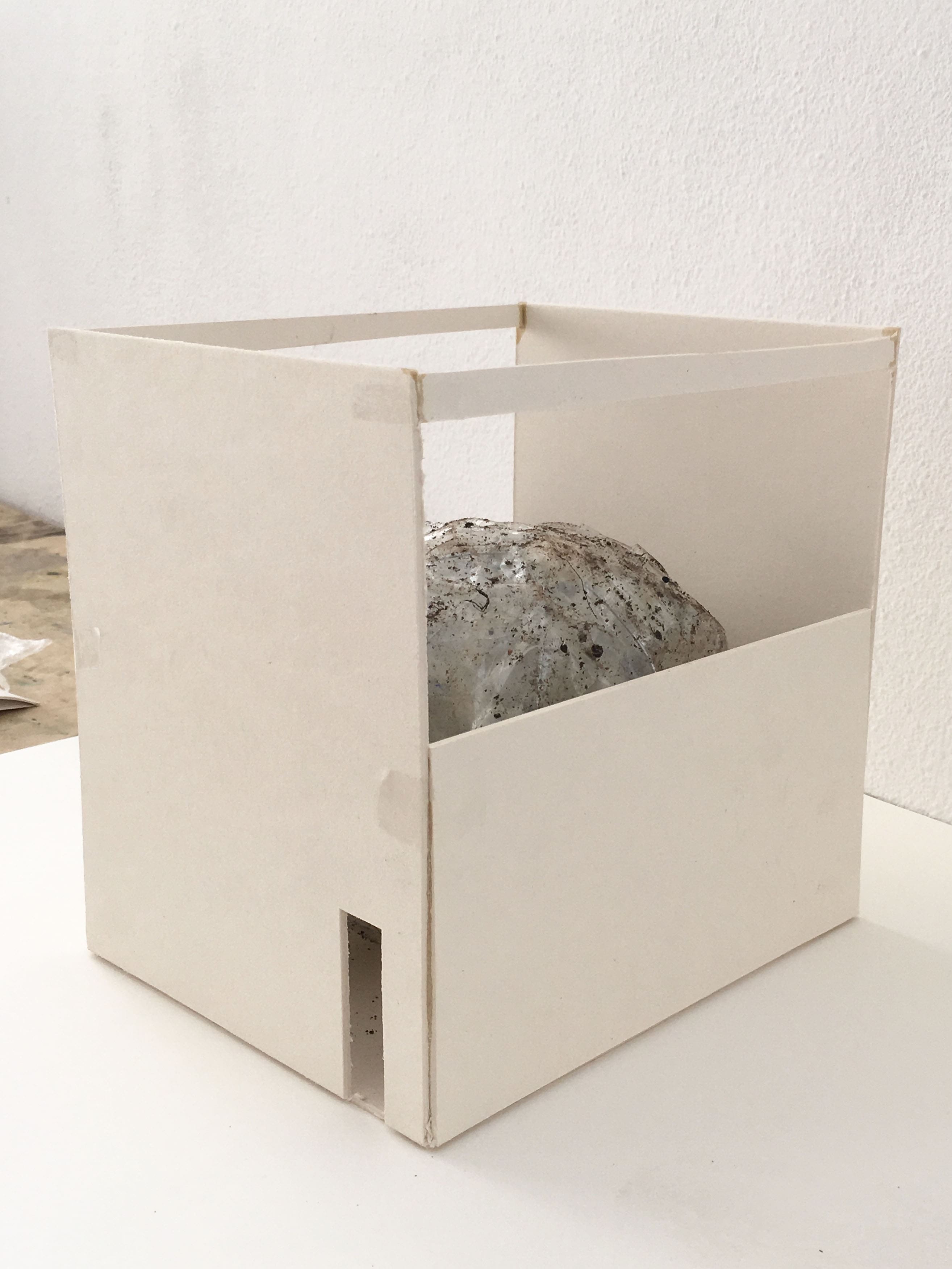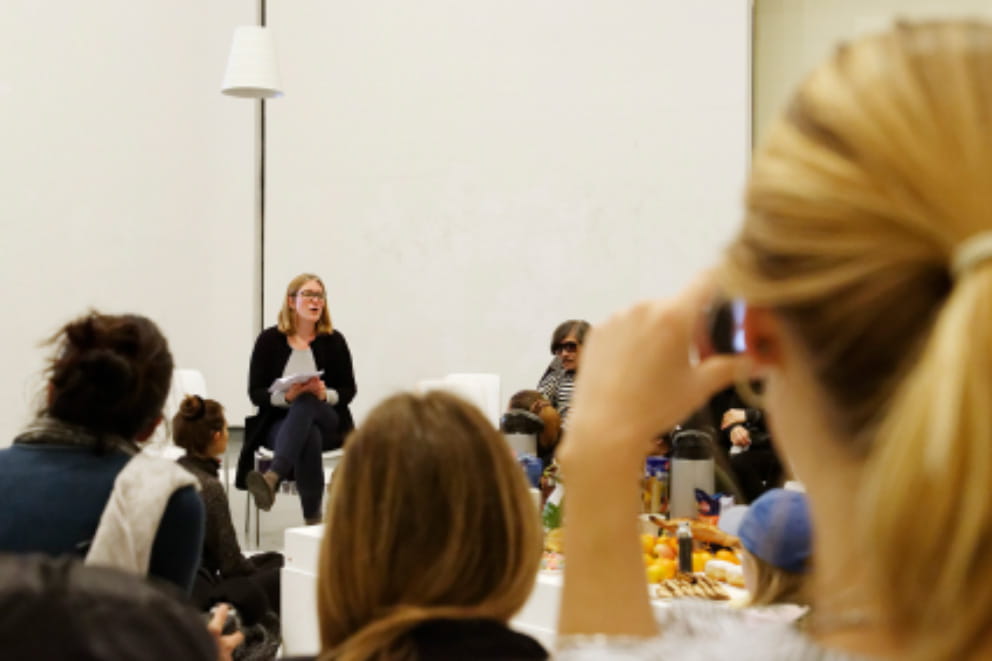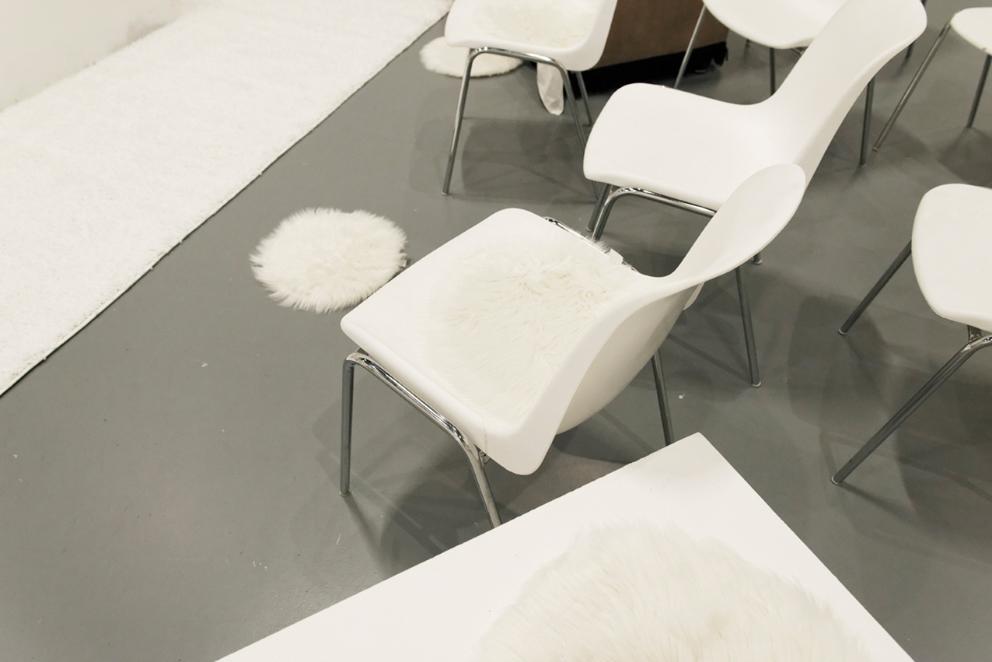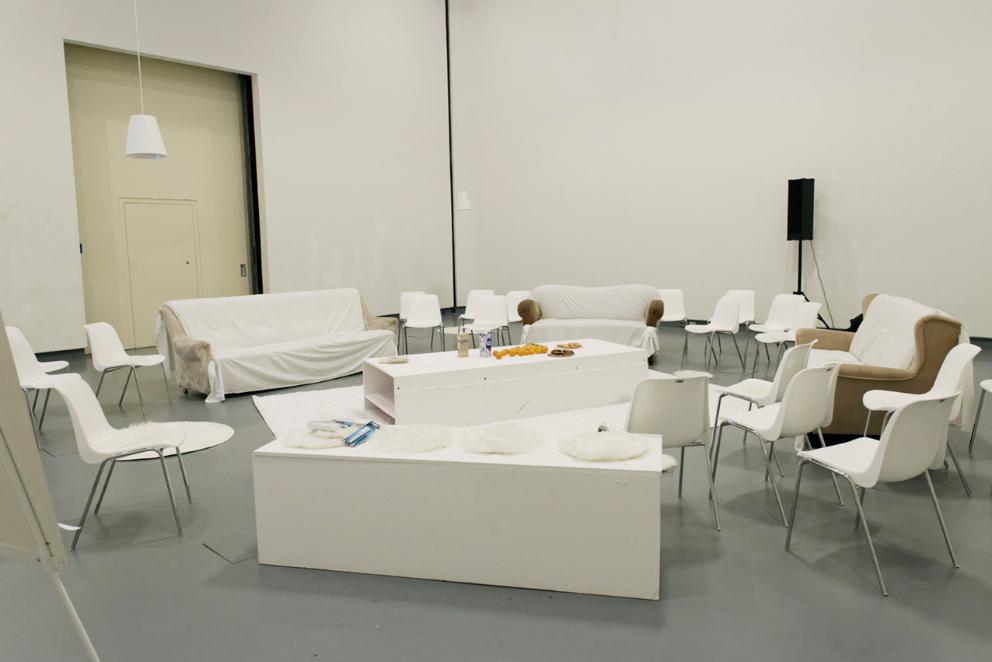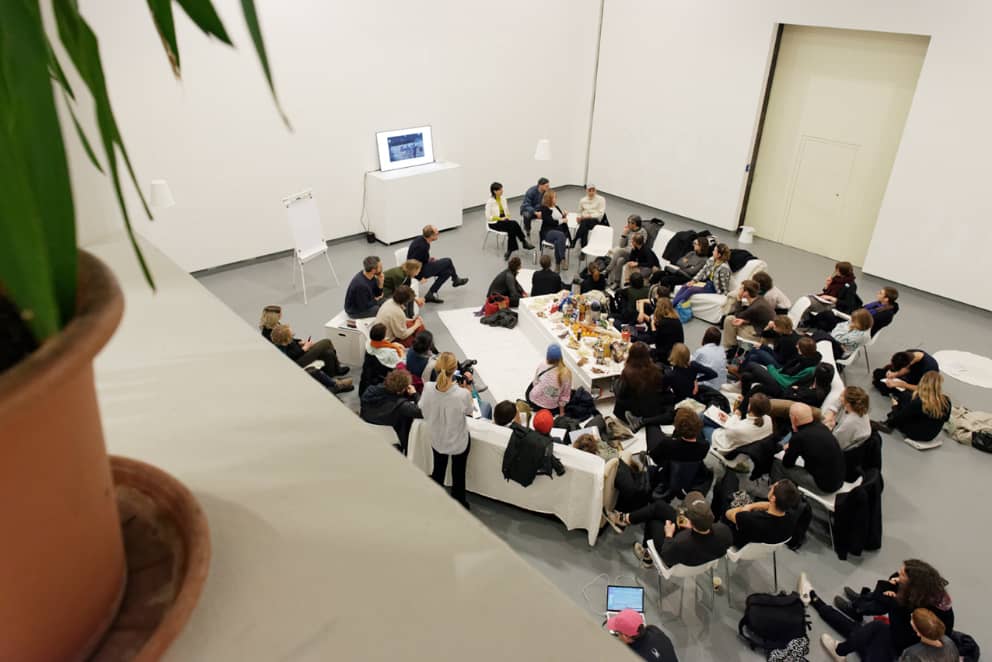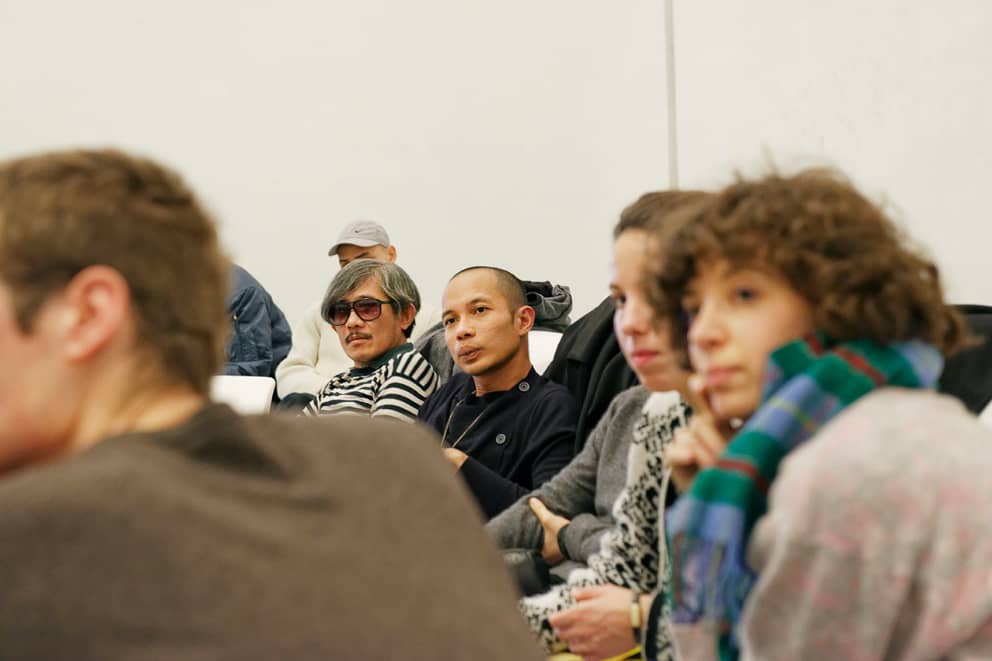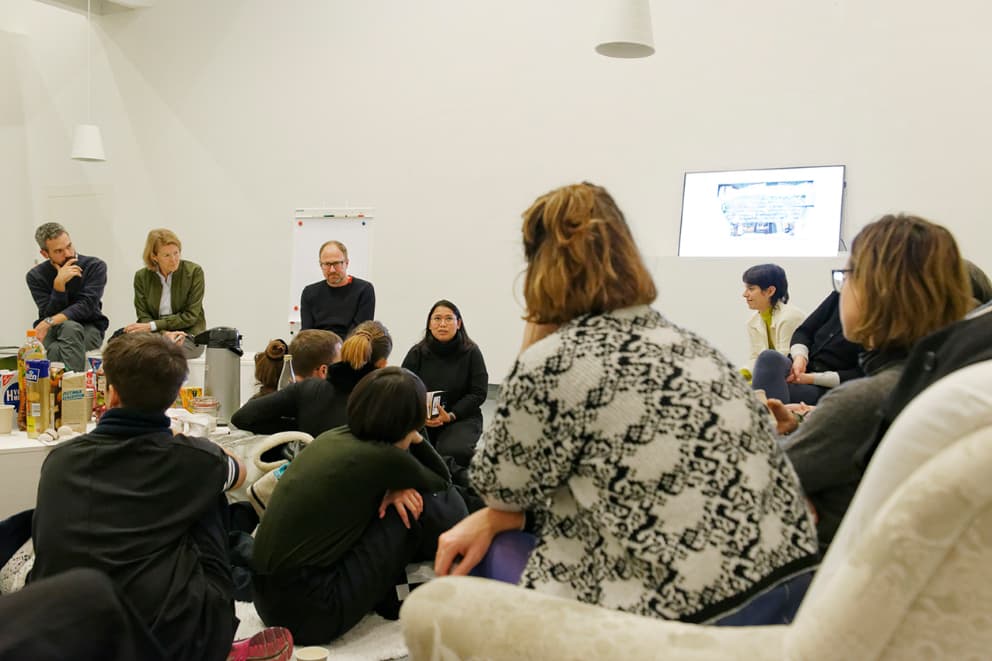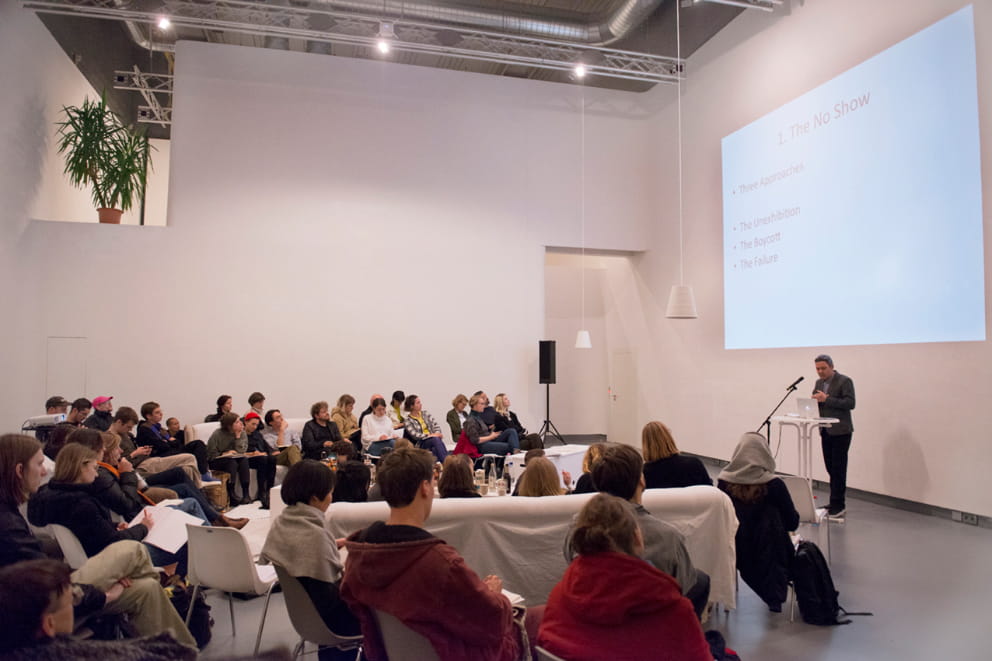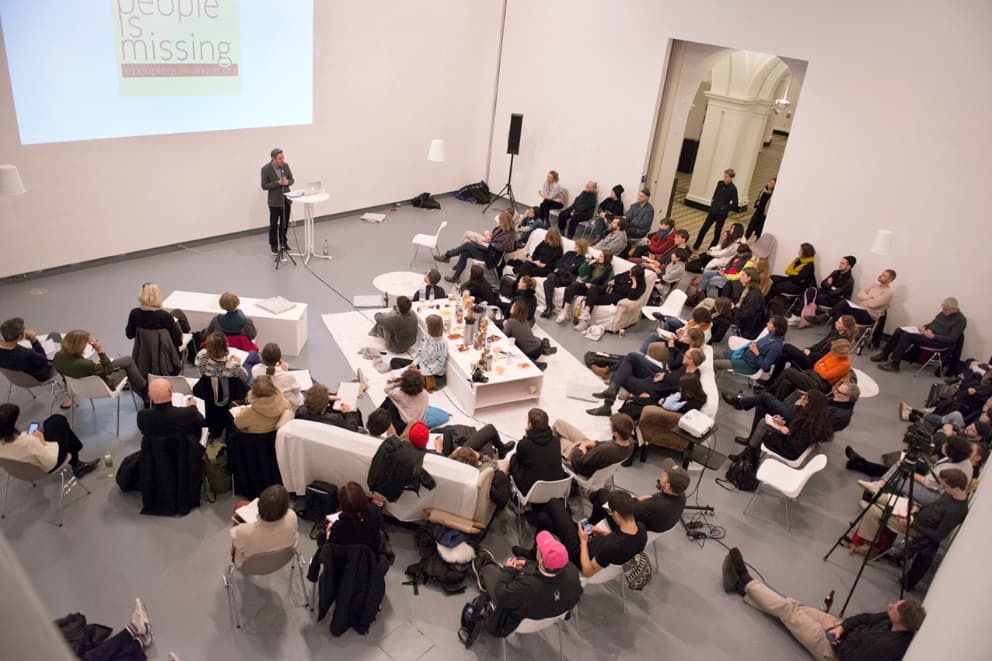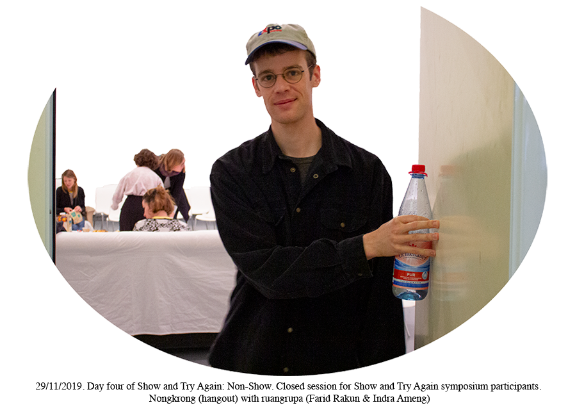Show and try again?
Showing as non-action, as a state of being.
Treating show as a process that constantly evolves as on open space that welcomes new participants and ideas.
Accepting the neutral space and not treating the activities and knowledge as goods.
There is no ‘us’ and there is no ‘them’, there is no ‘inside’ and there is no ‘outside’.
We should talk more about art.
Trusting the process of the show, thus trusting the pause, the gap, the anarchic dimension.
Considering to not show, not try or never again.
Freeing the show, emancipating it from the structures.
Thinking about what to offer to the show and what to offer to try.
Questioning the show and questioning what do you want to show.
Finding the right addressee for the question.
Showing the try is already a show.
Showing the things that are not supposed to be shown.
Trying to show on behalf of others, the ones who don’t have the tools to assembly.
Trying to avoid the clashes of the show.
Being careful not to be stuck in the loopholes of the show.
Not bringing boredom to try again or to show.
Being careful not to cross the line between the show and the show off.
Showing the assembly, not assembling the show.
Remembering and caring about the spectator who finally shapes the show.
Walking with the spectator through the show.
Imagining the show, as seen from non-show, assembly or try! QUESTIONING THE AFTER-SHOW
is the result of a field research—trying to capture the voices of the audience in the form of questions.
It created an archive of collected questions, that have grown out of the participation in the 5 days of Show and Try Again.
Following the approach of generating a living archive that stimulates new reflections and serves as a starting point for new discussions, this encyclopedia was translated into a game—that brings the manifold thoughts of visitors, participants, artists and initiators into motion and contact.
This format uses the active, discursive qualities inherent in the nature of the questions and tries to catalogue some of the experiences of the various participants in the program.
You are cordially invited to download the game and question the follow-up of the program-week in a playful way.
jana dohmann
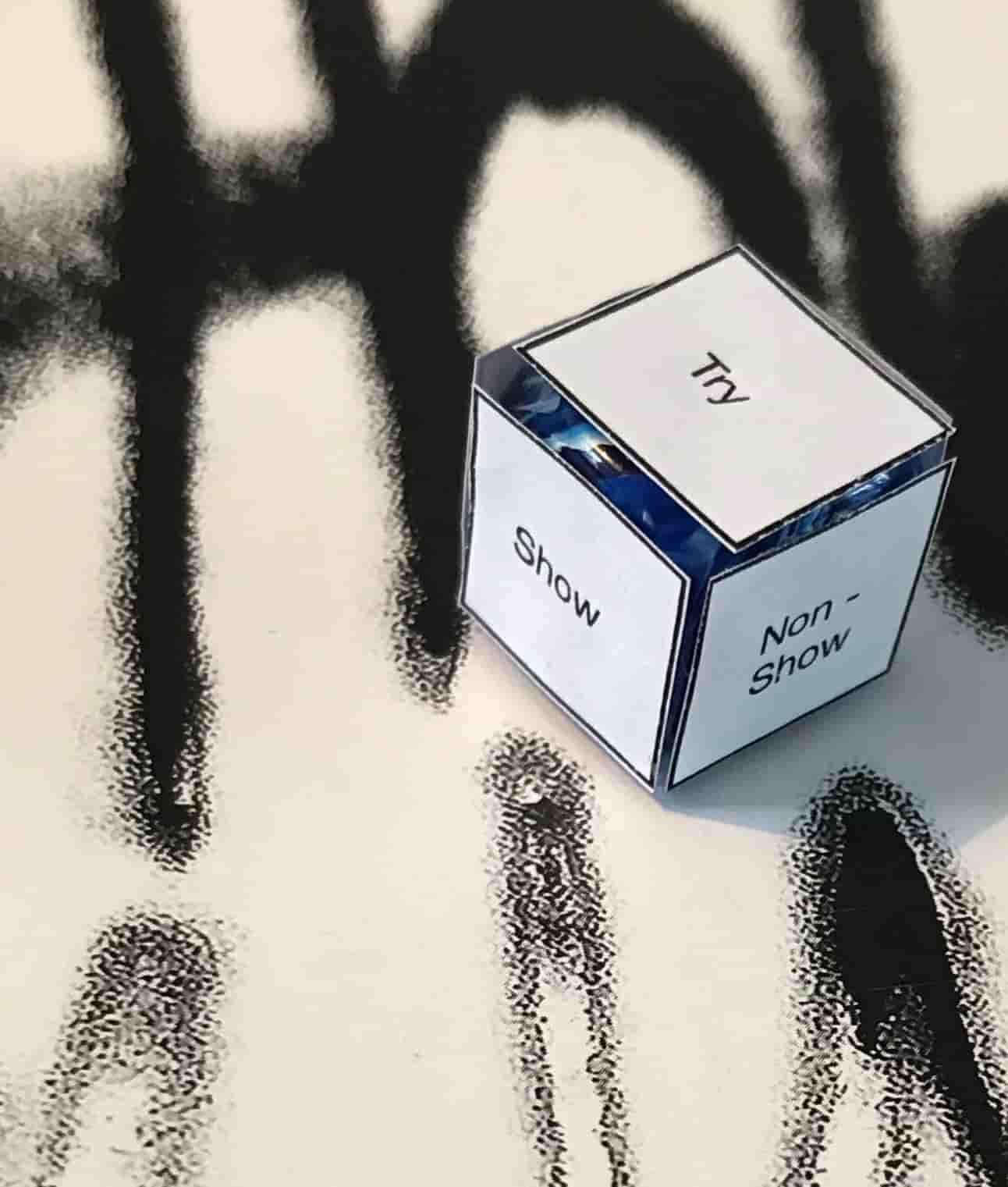
With every act of showing something invisible is performed as well: institutional frameworks, questions of representations,and practices of collaboration are an essential part of every moment of display. How do they relate to the process of showing?
Is protocol something that you also use as a term?
How is it possible to speak for a collective as a single person?
In what way are you experimenting, adopting the framework you are working in?
What if you pose a question and someone does not answer?
What if you invite someone and the person does not come?
What if you ask about it and the person says ‘not my problem’?
Wie gehe ich ein konzeptionell geprägtes Projekt an?
Wie interessant kann/muss eine Non-Show aus künstlerischer Perspektive gestaltet sein, um beim Publikum Interesse herstellen zu können? Oder anders: Wieviel tatsächlich sichtbaren Inhalt braucht eine Non-Show, um für das Publikum ästhetisch/inhaltlich greifbar zu bleiben?
How can we find methods to make working in a hierarchical cultural institution more comfortable—beside money and time pressure?
What are the potentials of a hangout?
Can everyone in his or her position boycott?
How can one deal with the limits of translation?
What is my responsibility as part of an audience?
How can we built up conversations where people can feel comfortable and invited in?
How do I create a space as an audience? What role can I take on? What role do I want to take on?
How do we embody knowledge that we unlearn?
How is it possible to show the context of the how?
What is the nature of a canon? What does it consist of?
If we only change the mode of the choice, how do we come to our new canon?
How can one deconstruct the canon?
Who needs the canon?
What does the canon actually tell?
How is it possible to participate in the canon? From what angle for what purpose?
How is value created?
How is the canon constructed? What might be other constructions be available?
How can one rethink critique without reproducing what is criticized?
How can we be a bit more generously?
How can an individual speak for a collective?
Can wasting time be used as a method, as a resource, a chance?
Why is it not healthy to get funding?
If curating is a research method, what role does the artist have?
Why should we still use the format of exhibition, when using the curatorial as research? Why not a book, instagram..?
How can we use artistic practice to talk about more social issues in the public?
How much responsibility do I have as a host for the dialog when creating a common space in a public event?
Is Show & Try Again an exhibition or a happening?
How much is this title of Show & Try Again connected to the term of friction?
Is the curatorial more important as a noun or as an adjective?
How can all voices be heard—even the silent ones?
How to use bodily movement to deconstruct the power structure of a situation?
Is there a protocol for a hangout?
Can one be host and guest at the same time?
How can you throw a brick at a bank while you can't walk out of that bank?
To assembly or not to assembly?
To biennial or not to biennial?
How can we talk about the topic of language in a language we all understand? Wie können wir über das Thema Sprache sprechen, in einer Sprache, die wir alle verstehen?
How can we dissolve a structure in which we immediately act in a certain role and hierarchy with which we do not feel comfortable?
nushin atmaca
The Limits of Translation
Oftentimes, translation is regarded as a means to foster understanding by translating from one language into another or by translating rituals, norms, and expectations into other forms of protocols and social interactions that are understood at a given place. Translation is also regarded as a tool to apply theories, methods, and techniques that are foreign to the own working field but nevertheless seem to be beneficial to use. But where and why are the limits of translation, if there are any?
Looking at the translation of spatial practices, several aspects come into mind: Obviously, a spatial practice is linked to the space it takes place in. But it is also shaped by the structures that surround it, by the social norms that are enacted within it as well as by the habitus of people who know how to behave in the performance of that particular spatial practice. The practice is also connected to and filled by the associations that people might have with regard to the given space. Thus, when re-creating the space of and for a certain practice in another setting, with other people, the limits of translation show themselves: Social norms can be explained, but can they be translated and thus enacted on the spot? Local structures that dominate and shape social interaction prevail over those that originally formed the spatial practice. Not to speak of feelings, emotions, and the attitude to life that is linked to most practices and derives from factors making up the original space of the practice: sounds, noises, smells, food, the climate as well social, political, and economic living conditions. All of this is not translatable.
What does this imply? The limits of translation remind us that local spatial practices are not only local because they are practiced at a particular place, but because they are intrinsically tied to the people, the norms and structures as well as to the habitus of a given place. The relational and situational character of any practice can become obvious through its translational limits. It does not necessarily become obvious as it also depends on the power and hegemonic possibilities of those wanting to translate a practice of their own. Interestingly enough, this shows itself also in how practices of different groups are described: While practices of white actors are mostly described (by themselves and others) and perceived of as universal, practices of non-white actors are often described (by themselves and others) and perceived of as local. This reflects less a valid classification of the local/regional/global character of practices than a valid assessment of where most of the power in postcolonial times is located and where decolonization still has urgency.
What does this entail for the curatorial? We have to take the limits of translation into account when we transfer practices from one locality to the other. We also have to become aware of the fact that our own practices are not only linked to space, but also to place. They are as relational and locally bounded as any other practices. The limits of translation help us to dimensionize ourselves and our work, while at the same time they invite us to think about how we could translate the most important parts of our work into any given context ñ not as a universal model, but rather to make us, our thoughts and work accessible for audiences and discourses that are new to us.
ewa meister
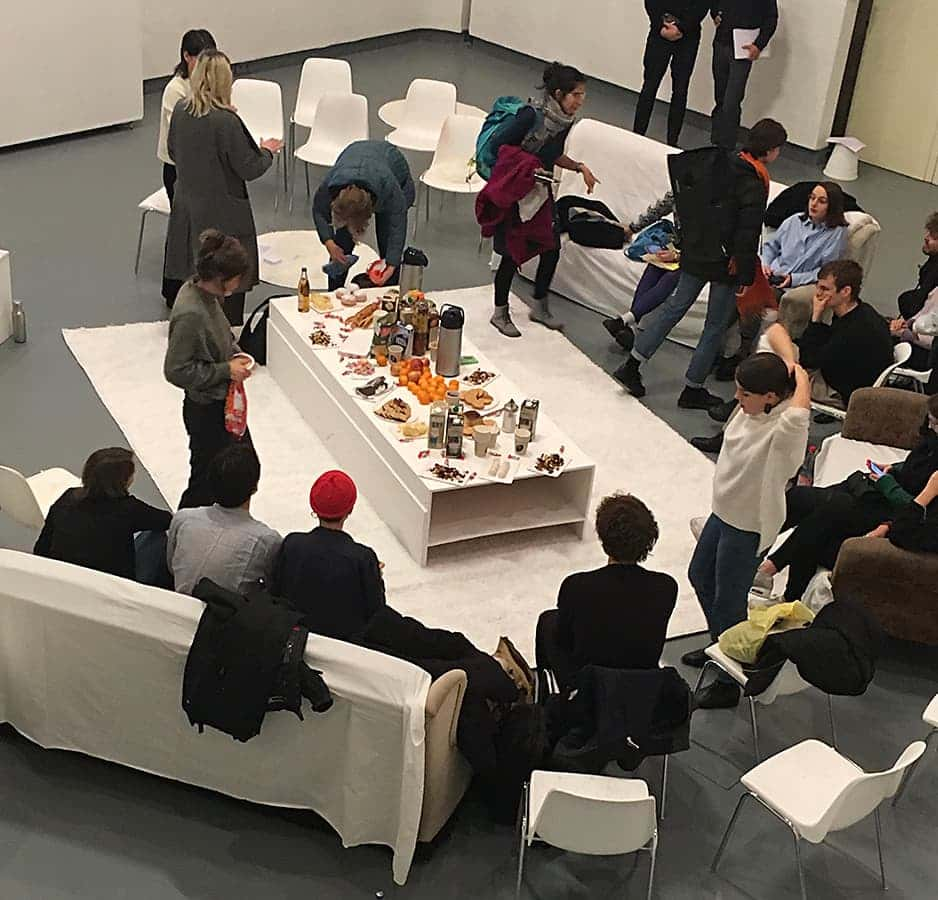
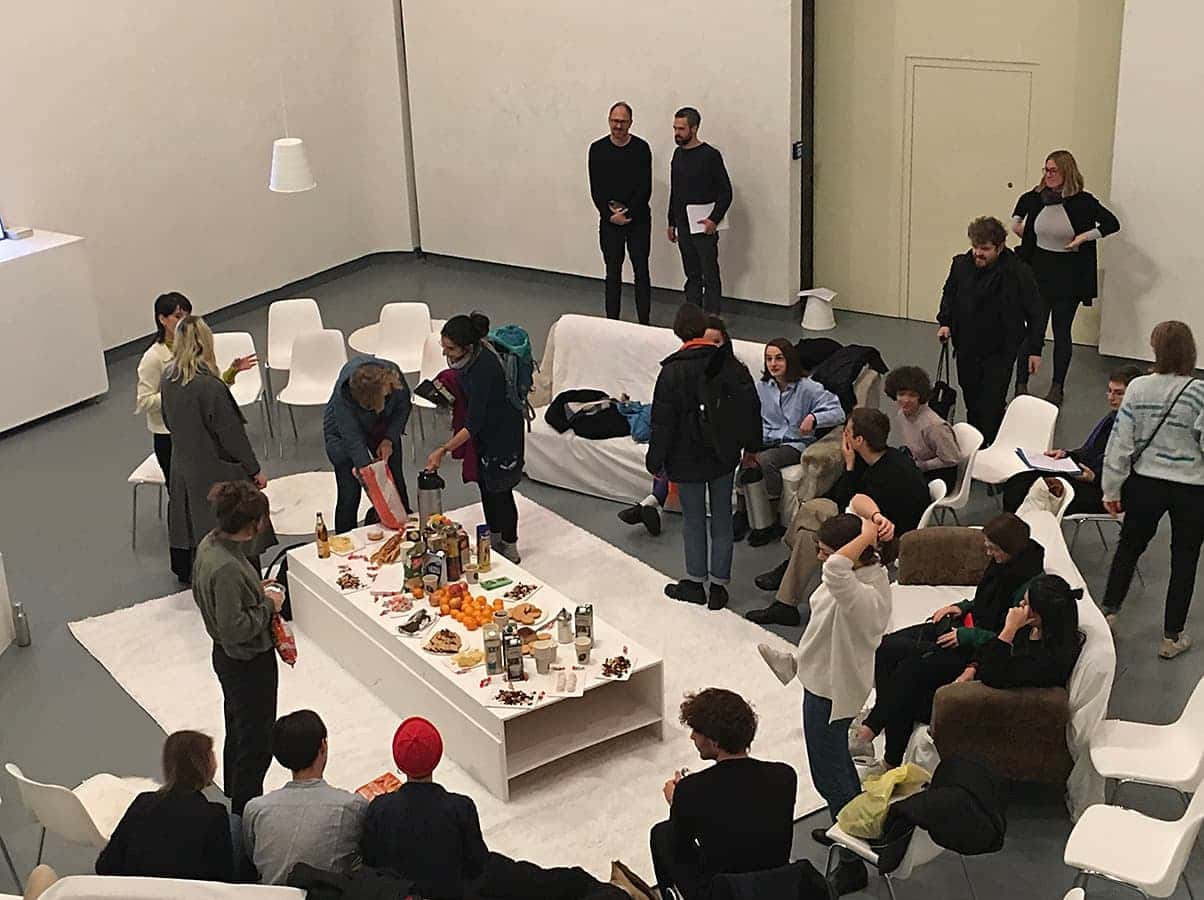
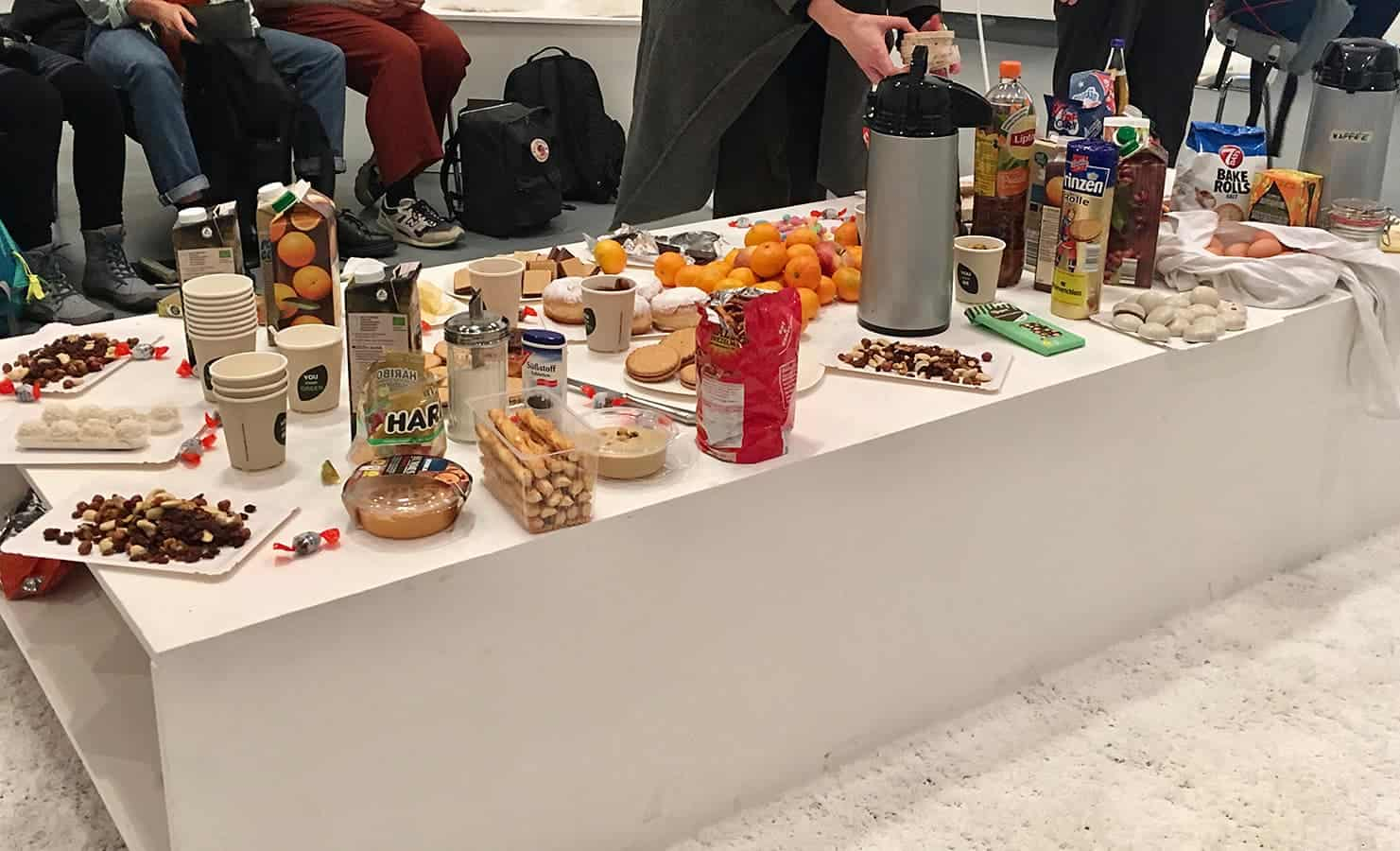
How did you feel in the space?
This idea of the living room, that everyone is looking for their own place in the same way, I would say was just a hint.
The work thus contributes to self-awareness and self-questioning of all participants.
The curatorial situation provides both the time and the space for encounter between entities unfamiliar with one another.
How could we find methods to make everyone more comfortable, it is very difficult, there is always the pressure from time and money.
I often had to think about how one could have created a true nonkrong-session and how a less hierarchical dialogue could have been developed.
It would have been nice if we all had sofas. This is just a different physical position and then you speak differently.
The second thing that is also connected with this is the ambivalence between productivity and unproductivity, which is already inherent in this invitation to waste time together. And how can something like this be transferred into a format that we still perhaps call exhibition?
Was there an encounter?
nadine vollmer
Memory Shots
30 November, 2019 7.34am
“What would it take to stop?”Is a quote by Oliver Marchart that Simon Sheikh brought in.
What would it take to stop the current situation.
The performance of a living room (some seating furniture loosely scattered around a coffee table, a flokati and some snacks) doesn’t make a hangout.
(Like one swallow doesn’t make a summer.)
Two people are bombarded by friendly, but persistently curious questions.
And I sit amongst everyone and want to ask:
Do you have any questions for us?
Only to press the stop button for a while and to give the situation a turn.
But I did not do it.
Hesitating and wondering:
Taking on responsibility? For whom?
For me? For them? For those?
Talking back on behalf of others?
Yet being relieved when Julia asks exactly that question.
Do you have any questions for us?
As if being a host is to save your quests from uncomfortable situations.
Being even more relieved when of the bombarded ones stuffs some handfuls of potato chips into his mouth (which will prevent him from speaking for some minutes) and asks: And you, what are you doing here?
“Decolonization is not my concern, it’s the concern of those who colonized.”
What would it take to stop?
birgit messmer
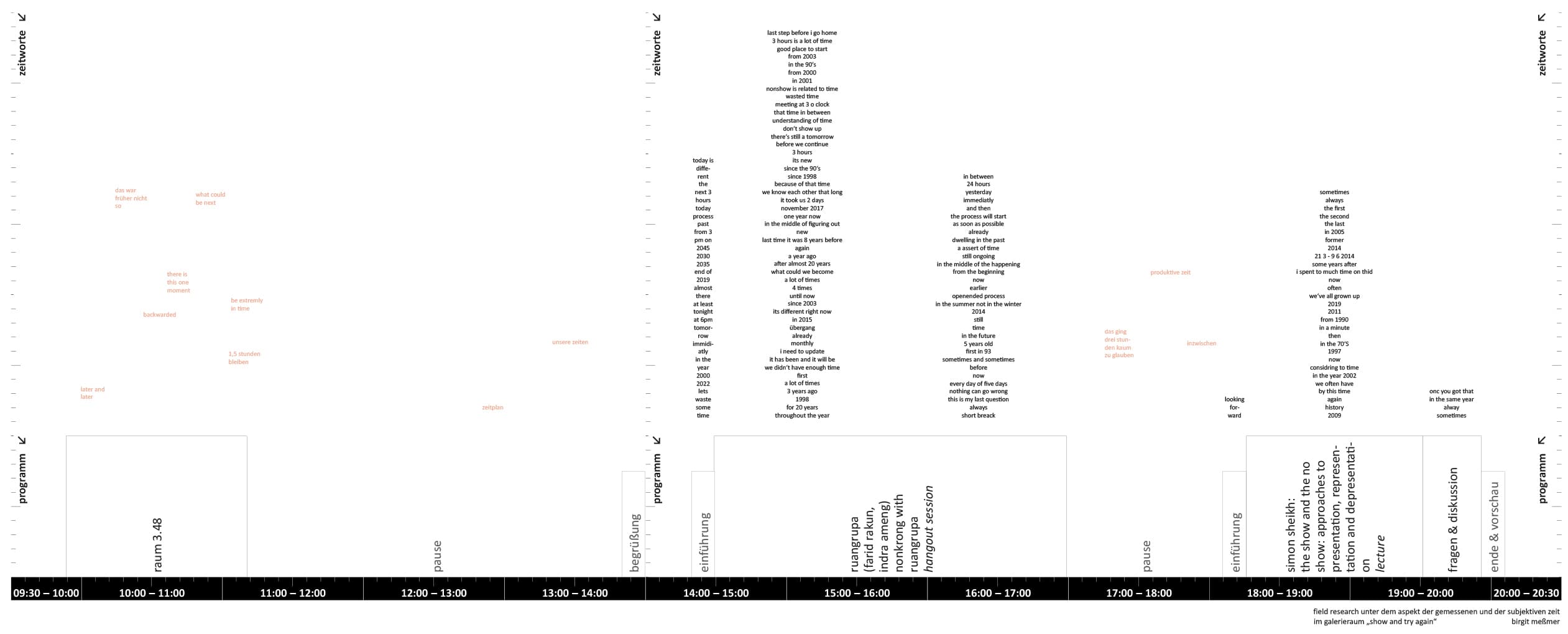
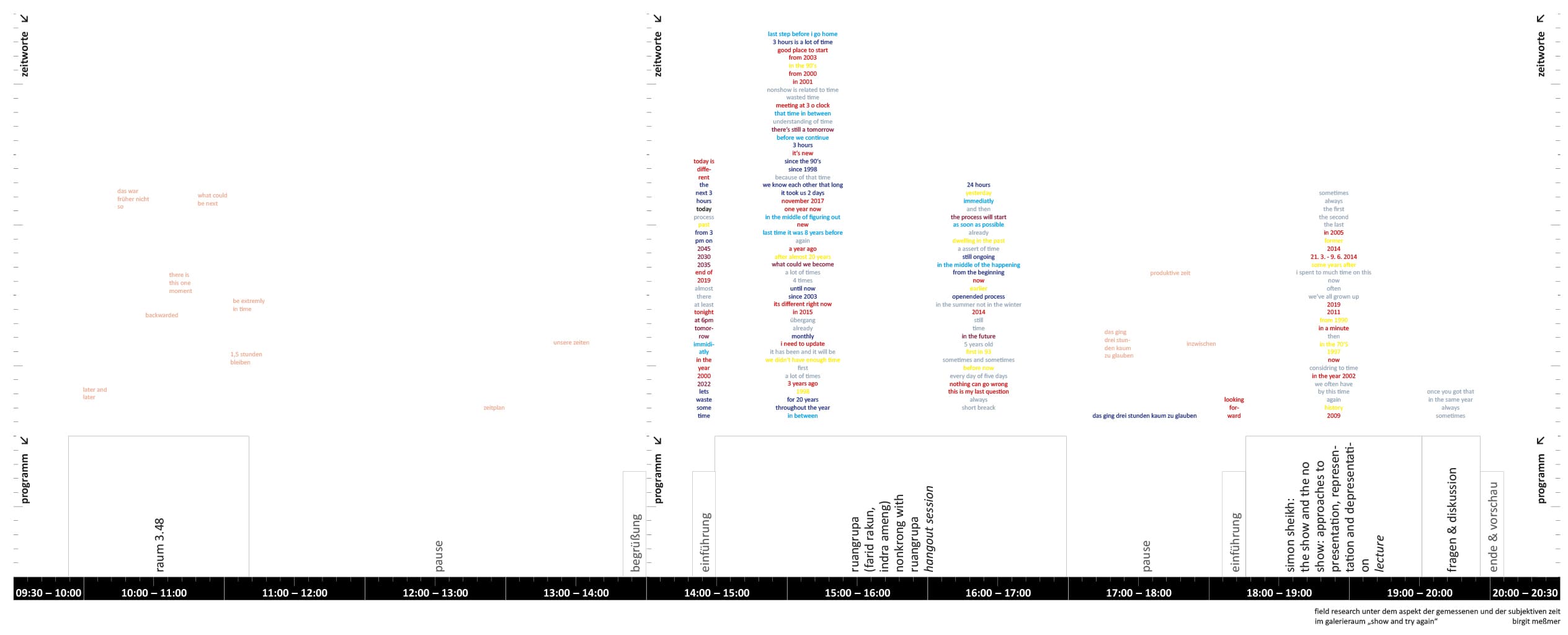
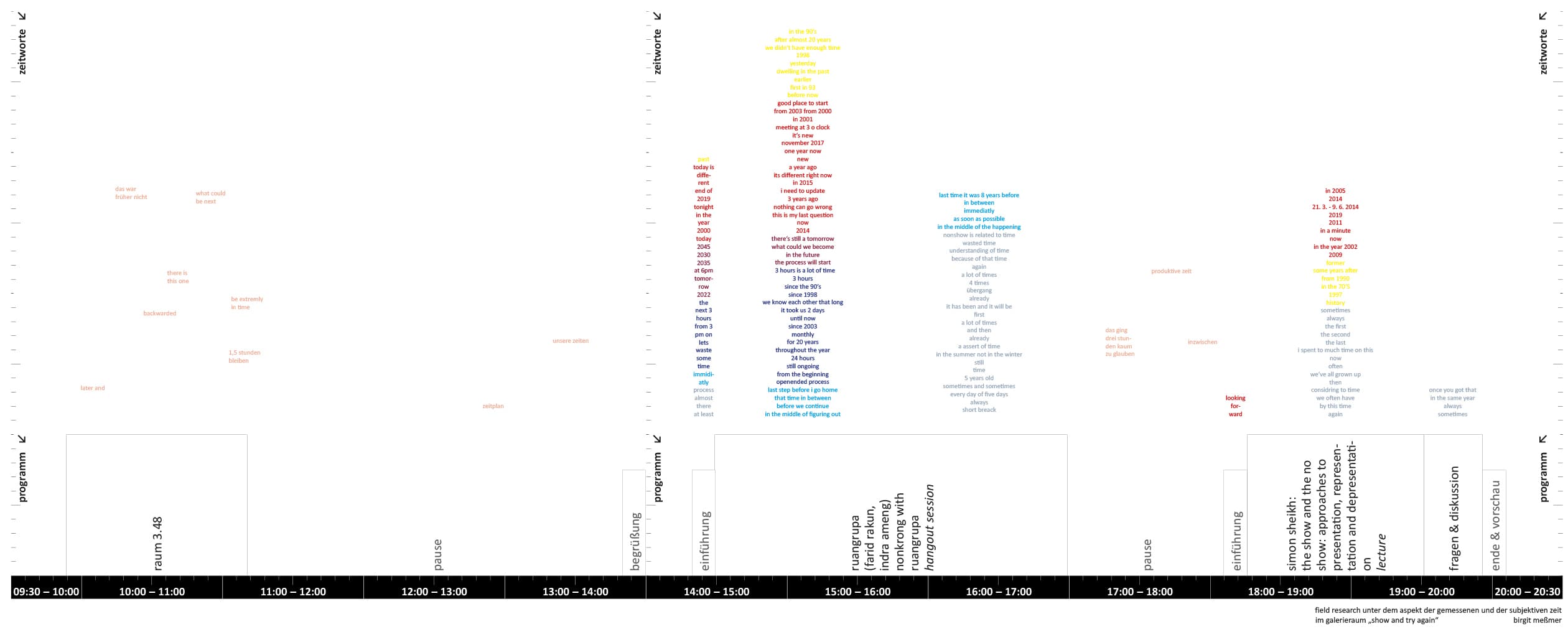
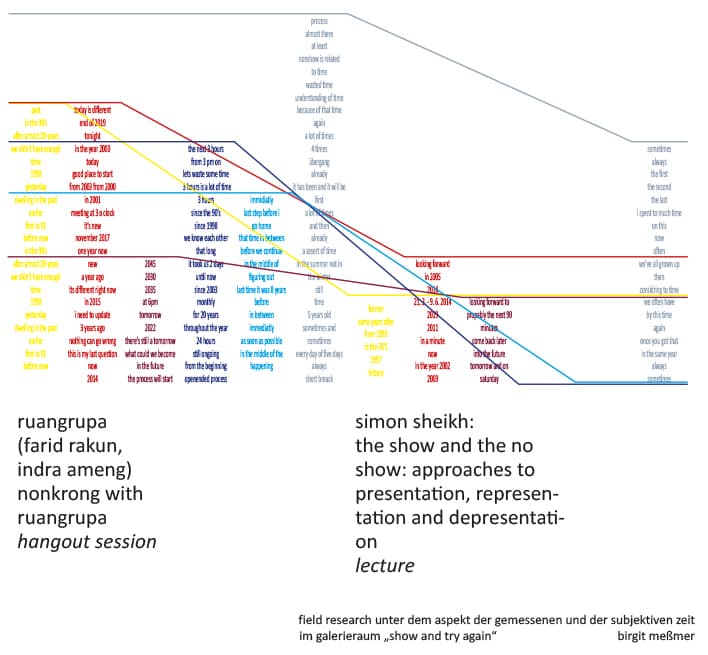
jonas von lenthe
How does it feel for you, to answer questions on behalf of the whole group?I had the feeling that this space was not taken.
You asked the first question during ruangrupa's hangout session. What was it?My question was something like: How does it feel for you, as representatives of a multi-headed, polyphonic collective, to answer questions on behalf of the group and speak on behalf of the collective?Was the situation open to questions? Was it welcome to ask questions?That was a moment when ruangrupa took a short breather, which created a space for questions. I had the feeling that no one noticed this space and since I found it partly unpleasant, I asked my question.That means that you primarily filled a gap that you perceived and did not just ask a question in order to obtain information?Hmm... Well, the question may be rather banal, although I have a sincere interest in ruangrupa's answer. But I could have given the question a pass or simply observed their behavior during the rest of the conversation and how they dealt with their role as representatives of the collective. Whether they flourish in it, or whether they tend to hold back. I might have been able to deduce this from silent observation.Was your question answered?Yes, I already had the feeling that this triggered another conversation, in the course of which it somehow came out how they felt about being here. They said something about trust and that anybody could do that and it's about availability and stuff. So yes, it's been answered.Do you think that you changed the course of what followed? Did an opening or change in the structure has taken place through your initiative?I wouldn't necessarily say that. Of course, I would be happy if this is the case.
